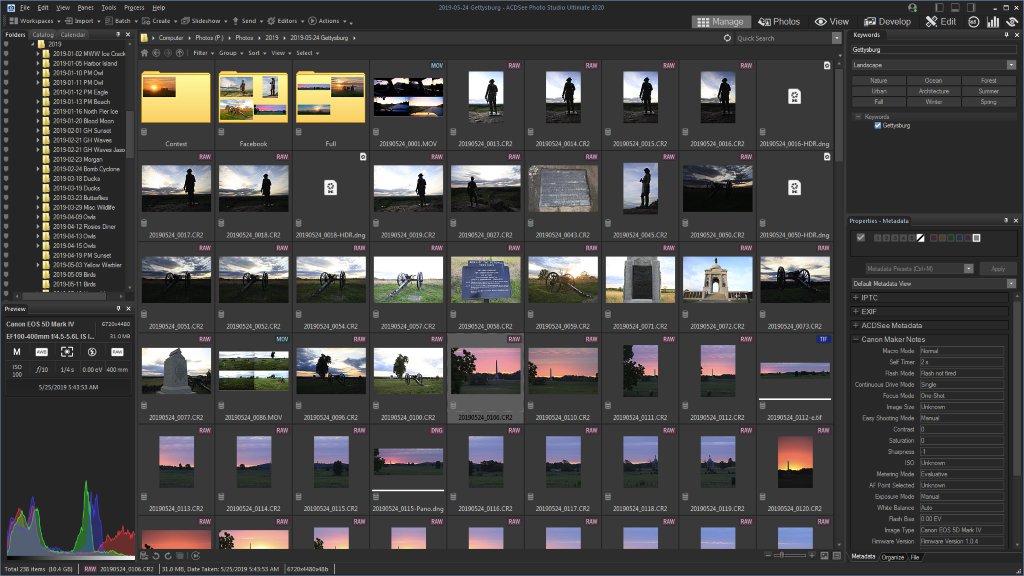
- #Acdsee 16 vs acdsee 17 how to#
- #Acdsee 16 vs acdsee 17 update#
- #Acdsee 16 vs acdsee 17 software#
- #Acdsee 16 vs acdsee 17 series#
This can be such a huge time saver and gives you far more flexibility when cloning aspects in an image. ACDSee has included a new feature that intelligently clones by adjusting both lighting and colors to produce a more natural-looking result. There are many occasions when I need to clone something into an image however due to slight differences in color and lighting it can several steps before the cloned section looks natural and pleasing. This is probably one of my favorite new features in ACDSee. I'll produce an automatically stacked HDR image and then work on that file with other layers to get an even more detailed and better looking final product. This is something that I actually do quite a lot.
#Acdsee 16 vs acdsee 17 software#
I personally think that editing using layers in ACDSee is probably a more effective and detailed way to merge images, however, sometimes it's much easier to simply click on 'Process' and let the software produce a starting point you can work from. For this reason, many photographers take multiple images with different exposures to merge together in post. Unfortunately, current cameras still aren't able to perceive deep shadows and bright highlights the same way that the human eye can. This is another feature that is extremely useful for architectural and many other types of photographers.
#Acdsee 16 vs acdsee 17 how to#
I love how simple and straight forward this is in ACDSee and the video above details precisely how to do it. There are plenty of situations where if I'm shooting an interior, for example, exposing at super small apertures is simply not convenient. For architecture specifically, I find that having this feature is pretty much a requirement now. It's really quite as simple as that and the results are as good as you'd expect them to be.
#Acdsee 16 vs acdsee 17 series#
As long as you have your series of images in a logical order of where the focus points are you can click on the 'Process' button and focus stacking will appear as a drop-down menu option. The great thing about ACDSee is that you're not required to hop in and out of two different software applications just to be able to use this feature. The other benefit of this is that you're not having to use incredibly bright lights that are required when shooting at f/22 or you don't need to expose the image for as long when shooting and stacking at a wider aperture. Firstly you can avoid issues relating to diffraction by shooting at your lenses sharpest aperture and secondly even at f/22 in many situations you're still not going to be able to get everything in sharp focus like you can by using this technique. The results you can produce using this method is far greater than stopping your lens down to f/22 for a couple of reasons.


If you're an architectural photographer like I am or if you're a product photographer then focus stacking is probably something you've done before. This is one of the things I love about the software, they continue to develop things that we haven't yet thought of and it translates into something properly useful and practical features. Of course this is entirely speculative however the technologies that ACDSee is implementing in its software is pretty genius. What if ACDSee could using what it knows about this persons face "repair" the image or make it so that the face is correctly in focus. Let's say you have a series of portraits and one of the images you took is perfect in composition and lighting except you slightly missed focus. What if ACDSee could use its face detect abilities to improve or repair images. I wonder if face detect could be used for even more incredible features. The thing I'm actually interested in is how this technology can be further developed.
#Acdsee 16 vs acdsee 17 update#
I personally loved the search features in ACDSee prior to this update and now with face detect it adds a whole new fantastic layer to the system. Instead of having to go through all of your files and folders trying to find them, you can simply search for them by name and ACDSee will bring up all the pictures that includes them.

Let's say for example you did a shoot with someone and you need to quickly find their pictures again. The way this works is that ACDSee using their intelligent software is able to differentiate between individual faces and can sort portraits based on people. In a previous article, I discussed how much I love the file management system that ACDSee has and now it's been made even better. Now, normally when someone says face detect you generally think autofocus in mirrorless cameras, ACDSee, however, has implemented a feature in their latest software that can not only recognize faces but can sort images based on that too.


 0 kommentar(er)
0 kommentar(er)
